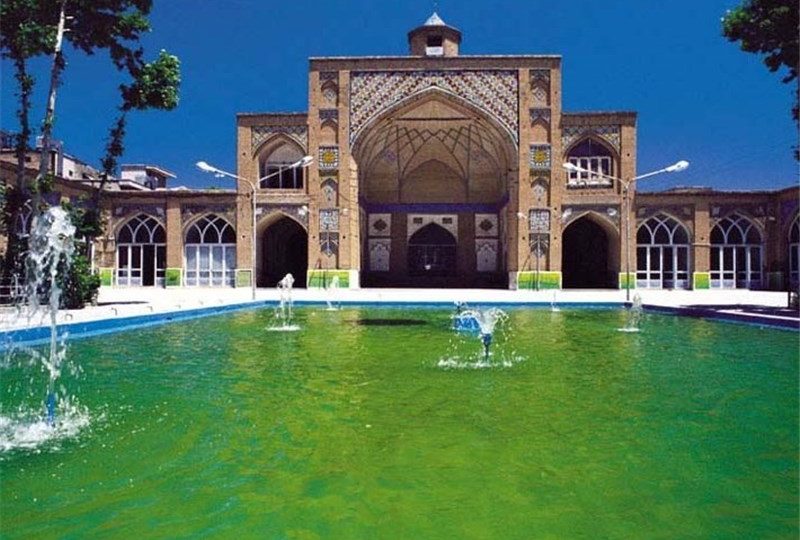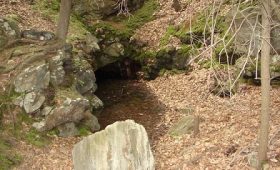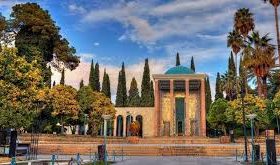Boroujard Grand Mosque is one of the first mosques in Iran that was built in the 2nd to 3rd century AH. This one-door mosque, which is one of the sights of Borujerd, consists of parts such as the central courtyard, the porch, the space of the dome and the surrounding naves and the winter nave. The Jame Mosque was registered in the list of national monuments of Iran and is considered as a birth certificate for Borujerd, which attracts many tourists every year.
Borujerd Jame Mosque, known as Juma Mosque, which is called “Jameh Mosque” in Borujerdi dialect, is one of the historical mosques and one of the famous architectural buildings in Borujerd city.
There are certain local beliefs about the mosque. People are of the opinion that Imam Hassan Mojtabi (a.s.) traveled to Borujerd and gave a speech in Boroujard Grand Mosque. In this case, there is no document or written source, and this opinion is only rooted in oral statements and popular beliefs. This building, which is one of the most important monuments of Iran’s past architecture, was registered in the list of national monuments in 1314 as one of the sights of Lorestan province.
According to archaeologists, the original building of Boroujard Grand Mosque belongs to the 2nd to 3rd centuries of AH and it was converted from a half-ruined fire temple from the Sassanid period into a mosque. After the arrival of Islam in Iran and its formalization, naturally, many Zoroastrian religious places and fire temples became mosques, of which Boroujard Grand Mosque was one of them.
Between the years 150 and 226 AH and during the rule of Abu Dolf in the west of Iran, the construction of the Boroujerd Grand Mosque was put on the agenda with the presence of his minister named Hamuleh bin Ali Boroujerdi. The northern part of the mosque was built a little later and in the 4th century. Due to the long history (twelve centuries) of this mosque, it has suffered many damages and has been rebuilt many times.
Landscaping of the mosque was done in the 4th and 5th centuries of Hijri, as well as its additions and repairs according to the existing inscriptions. The text of Shah Abbas II’s Safavid decree is above the western entrance, which shows the date of 1022 AH. There is also a poetic inscription on the minbar of the dome, which is engraved with the year 1068 AH. Among other historical works in this mosque, one of the mosque doors at the junction of the western nave with the dome dated 1092 AH and two stone tablets on the sides of the porch of the mosque dated 1209 AH. According to sources and excavations, the main dome is the oldest It is considered part of the mosque. Jame Mosque was built during the Seljuk period and had a lot of prestige. In this period, decorations were added to the building. The decorations of the mosque are based on bricks, and to a small extent, tiling and plastering decorations can be seen in it.
Exposed earthenware tells about the continuation of construction activities in the mosque and its repair and reconstruction from the 3rd century to the 11th century AH. The peak of the prosperity of the mosque goes back to the Seljuk period. The layers identified at a depth of 230 cm from the current floor of the dome are a sign of the existence of a building from the early centuries of Hijri. After this period, the floor of the dome was raised to its current level with the construction of brick columns, arches and clay tiles. Considering the level of the current floor of the dome with the naves on its sides, the construction of these two naves can be considered at the same time as the raising of the dome floor.
During the Ilkhanate period, a lot of damage was done to the mosque, which was later repaired and parts were added to it. These parts included the repair of the dome, the construction of the porch and the eastern, western and northern naves.
The discovery of four silver coins with the dates of 851 and 853 AH in the Western Shabestan strengthens the possibility that the aforementioned Shabestans were built in the second half of the 9th century AH. Later, they filled the empty space under the dome and destroyed its adobe arches, which according to the discovery of a coin with the date of 1124 AH in this place; these actions can be attributed to the beginning of the 12th century AH.
Boroujard Grand Mosque was built as a complex building that included the mosque, water reservoir, Gharibkhane building, square and other accessories, and today there is no trace of them. Jame Mosque has features of Islamic architecture and ancient architecture of Iran.
In terms of shape, the Jama Mosque is a type of single-evan mosque and has two entrance doors in the eastern and western parts that open to the main courtyard. This historical structure includes the central courtyard, the porch, the dome space and the naves around it and the winter nave. There is also a tomb on the eastern side of the mosque. According to the available evidence, the Safavids, Zandians and Qajars made major repairs to the mosque and added parts to it.
The dome is located on the south side of the mosque and the height of its dome reaches 20 meters from the ground. The foundation of the walls of the dome is made of black stone and carcass stone with lime mortar. The architecture of this part is similar to the four arches of the Sassanid period. The nave of this nave is located on the north side of the mosque at a lower height than other parts and has a cool atmosphere in summer. This nave with its many columns will admire every visitor. Interestingly, if two people stand cross-legged in two columns facing each other and talk, they can hear each other’s voices. The south porch has two garlands that were added to the mosque later. The pulpit of this pulpit, which has 9 steps, stands out in the middle porch of the mosque. The ablution house is located next to the mosque and has a large entrance called Gharibkhana




